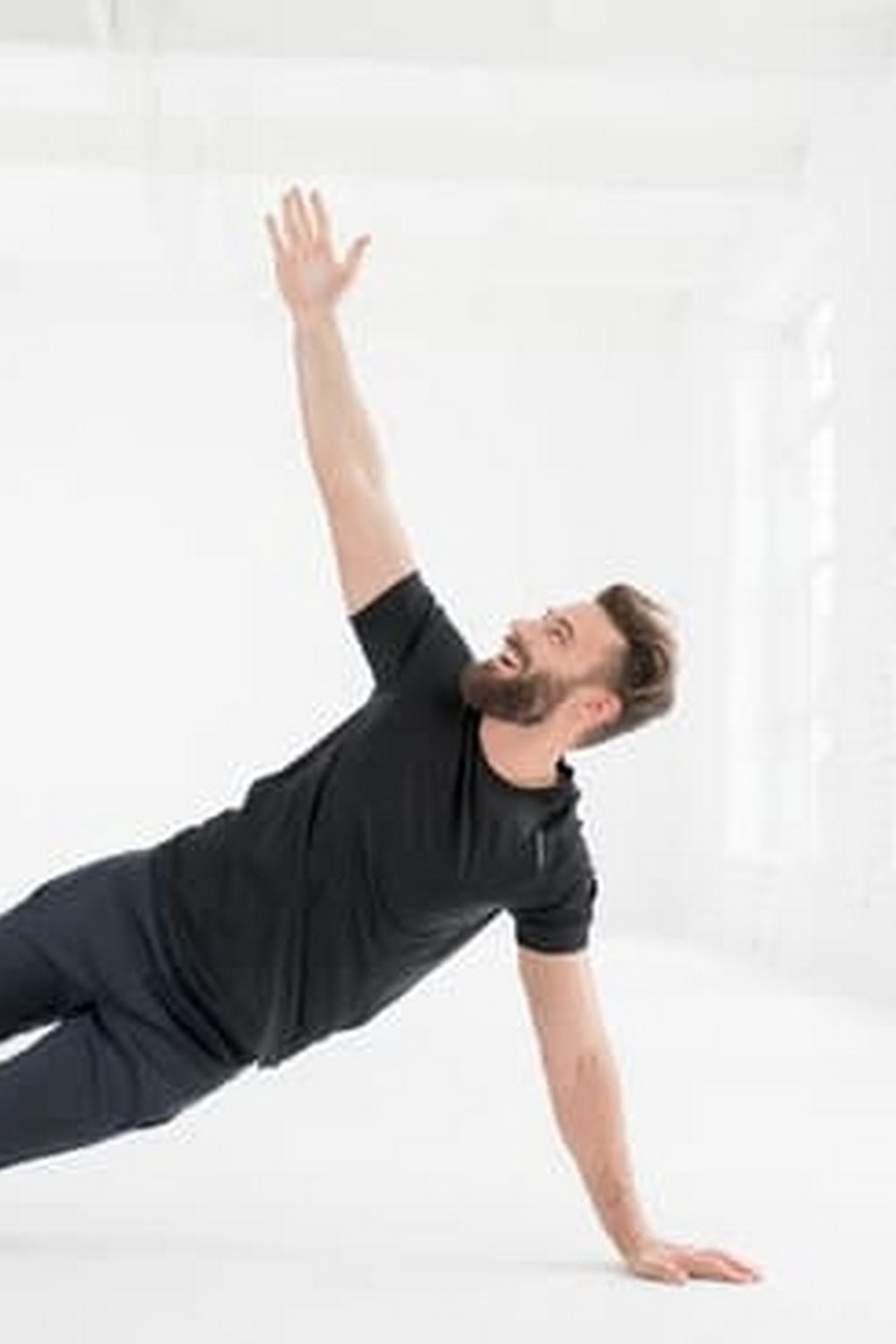In a world where high-intensity workouts often take center stage in the realm of fitness, it is easy to fall into the trap of believing that pushing ourselves to the limit is the only path to health and wellness. However, the truth is that you can be fit and healthy without subjecting yourself to grueling, high-intensity exercises.
By understanding how you can achieve your fitness goals through sustainable and enjoyable methods, you can prioritize your well-being without feeling overwhelmed or intimidated.
One key aspect of maintaining a fit and healthy lifestyle without high-intensity workouts is setting realistic goals. It’s important to remember that every individual’s fitness journey is unique, and what works for one person may not work for another. By establishing achievable milestones that align with your personal preferences and physical capabilities, you can build a foundation for long-term success in improving your overall health.
Additionally, incorporating low-impact exercises into your routine can have significant benefits for both your physical and mental well-being. Activities like walking, swimming, yoga, and Pilates offer a gentle yet effective way to stay active, strengthen your muscles, improve flexibility, and reduce stress. These forms of exercise not only provide a great alternative to high-intensity workouts but also promote sustainability by minimizing the risk of burnout or injury.
Setting Realistic Goals
Setting realistic fitness goals is crucial in achieving a healthy lifestyle without the need for high-intensity workouts. It is common to believe that only intense exercise routines lead to better health, but that is not always the case.
By setting achievable goals that align with your current fitness level and schedule, you can make steady progress towards improved health and well-being. Here are some tips on how you can be fit and healthy without high-intensity workouts:
- Start with small, manageable goals: Instead of aiming to run a marathon within a few weeks, consider setting smaller goals like walking for 30 minutes every day or incorporating more vegetables into your meals.
- Focus on consistency: Consistency in your exercise routine is key to long-term success. Even if your workouts are not high-intensity, regular physical activity can still provide numerous health benefits.
- Track your progress: Keep a journal or use fitness apps to monitor your improvements over time. Celebrate each milestone reached, whether it’s being able to do more push-ups or improving your flexibility in yoga.
By setting realistic and attainable fitness goals, you can create a sustainable plan for staying fit and healthy without the pressure of high-intensity workouts. Remember that everyone’s journey towards wellness is unique, and it’s essential to find what works best for you in terms of exercise and lifestyle choices. Whether it’s incorporating low-impact exercises like swimming or practicing mindfulness through meditation, prioritizing your health should always be a top priority.
- Find activities you enjoy: Explore different forms of exercise until you discover what brings you joy and keeps you motivated. Whether it’s dancing, hiking, or playing a sport, making fitness fun will help maintain your commitment.
- Listen to your body: Pay attention to how your body responds to different types of physical activity. If high-intensity workouts leave you feeling exhausted or in pain, opt for gentler options that still promote movement and strength.
- Consult with a professional: Consider seeking guidance from fitness trainers, nutritionists, or healthcare providers who can help tailor a wellness plan suited to your individual needs and goals.
Overall, the key to being fit and healthy without high-intensity workouts lies in finding balance, listening to your body, and prioritizing sustainable habits that support overall well-being. With patience and dedication to your personal journey towards health, you can achieve a thriving lifestyle that doesn’t rely solely on intense exercise routines.
Incorporating Low-Impact Exercises
When it comes to staying fit and healthy, many people believe that high-intensity workouts are the only way to achieve their fitness goals. However, this misconception can often lead to burnout or injuries for those who may not be able to sustain such intense exercise routines.
The good news is that you can still maintain a fit and healthy lifestyle without having to engage in high-intensity workouts. In this section, we will explore how incorporating low-impact exercises like walking, swimming, yoga, and Pilates can benefit your overall health.
Here are some key benefits of incorporating low-impact exercises into your fitness routine:
- Low Risk of Injury: Low-impact exercises are gentle on the joints, making them suitable for individuals of all ages and fitness levels. By choosing activities like swimming or yoga, you can reduce the risk of strain or overuse injuries commonly associated with high-impact workouts.
- Improved Cardiovascular Health: Activities such as brisk walking or swimming can help improve cardiovascular endurance without putting excessive stress on the heart. These exercises can enhance circulation, increase lung capacity, and lower blood pressure over time.
- Enhanced Flexibility and Strength: Yoga and Pilates focus on improving flexibility, balance, and core strength through controlled movements and stretching exercises. Practicing these disciplines regularly can help prevent muscle imbalances and promote better posture in daily activities.
By incorporating low-impact exercises into your fitness routine, you can achieve a well-rounded approach to staying fit and healthy without relying solely on high-intensity workouts. Remember that consistency is key in maintaining long-term health goals, so finding an exercise regimen that you enjoy and can effortlessly incorporate into your lifestyle is crucial.
Whether it’s a relaxing yoga session or a refreshing swim at the pool, prioritize your physical well-being by exploring low-impact options that work best for you.
Nutrition Tips
When it comes to maintaining a healthy lifestyle and achieving fitness goals, nutrition plays a crucial role. Contrary to popular belief, you do not have to engage in high-intensity workouts to support your fitness journey. A balanced and nutritious diet can go a long way in helping you stay fit and healthy without pushing yourself to the limit. Here are some nutrition tips to guide you on this path:
Focus on Whole Foods
Incorporating whole foods into your diet, such as fruits, vegetables, whole grains, lean proteins, and healthy fats, can provide essential nutrients for your body’s overall well-being. These foods are nutrient-dense and can help fuel your workouts and daily activities without the need for excessive exercise.
Mindful Eating
Practicing mindful eating involves paying attention to your body’s hunger cues and being aware of what you are consuming. By tuning into your body’s signals, you can better control portion sizes, choose healthier food options, and prevent mindless eating habits that may hinder your fitness goals.
Stay Hydrated
Drinking an adequate amount of water is essential for maintaining good health and supporting physical activity. Staying hydrated can improve energy levels, aid digestion, regulate body temperature, and enhance overall performance during exercise. Aim to drink water throughout the day and especially before, during, and after workouts to keep your body functioning optimally.
By following these nutrition tips and choosing wholesome foods that nourish your body, you can support a fit lifestyle without the need for high-intensity workouts. Remember that being healthy is about more than just physical appearance – it’s about feeling good from the inside out and prioritizing your overall well-being.
Mindfulness and Relaxation Techniques
In today’s fast-paced world, the importance of mental well-being in achieving overall health and fitness cannot be overlooked. Many people believe that high-intensity workouts are the only way to stay fit, but incorporating mindfulness and relaxation techniques into your routine can have a significant impact on your physical health as well.
By exploring the connection between mental well-being and physical health, including stress-reducing activities like meditation and deep breathing exercises, you can achieve a balanced approach to wellness without high-intensity workouts.
The Mind-Body Connection
The mind-body connection is a powerful concept that highlights the relationship between our mental and physical health. When we are stressed or anxious, it can manifest in physical symptoms such as muscle tension, headaches, and digestive issues.
By practicing mindfulness techniques like meditation and deep breathing exercises, we can calm the mind and reduce stress levels, which in turn can have a positive impact on our overall health. This holistic approach to wellness recognizes that our mental state plays a crucial role in our physical well-being.
Stress Reduction for Better Health
Chronic stress is known to have detrimental effects on the body, ranging from increased risk of heart disease to weakened immune function. Incorporating stress-reducing activities like meditation into your daily routine can help lower cortisol levels (the stress hormone), improve sleep quality, and boost mood.
Deep breathing exercises have also been shown to activate the body’s relaxation response, leading to lowered blood pressure and reduced anxiety. By prioritizing these mindfulness practices alongside your exercise routine, you can enhance both your mental and physical health without the need for high-intensity workouts.
Making Time for Self-Care
Incorporating mindfulness and relaxation techniques into your daily life doesn’t have to be time-consuming or complicated. Taking just a few minutes each day to practice deep breathing exercises or engage in a guided meditation session can make a significant difference in your overall well-being.
Prioritizing self-care is essential for maintaining balance in all aspects of your life, including fitness and health. By nurturing both your mind and body through these stress-reducing activities, you can achieve optimal wellness without relying solely on high-intensity workouts.
Consistency Over Intensity
Consistency in exercise routines is key to achieving long-term health goals, even if they are not high-intensity workouts. Many individuals believe that intense, grueling workouts are the only way to stay fit and healthy. However, the truth is that consistency trumps intensity when it comes to maintaining overall wellness. By incorporating regular physical activity into your daily routine, you can reap numerous health benefits without pushing yourself to the limits with high-intensity exercises.
One of the main advantages of consistent exercise routines, even if they are low-impact or moderate in intensity, is the improvement in cardiovascular health. Activities like brisk walking, cycling, or swimming can help strengthen your heart muscle, improve circulation, and lower blood pressure over time.
These low-intensity exercises also reduce the risk of chronic diseases such as heart disease, diabetes, and obesity. By making a commitment to regular physical activity, you can significantly enhance your cardiovascular fitness and overall well-being.
Moreover, consistent exercise routines play a crucial role in weight management and muscle toning. While high-intensity workouts may burn more calories in a shorter amount of time, sustained moderate exercise can still aid in losing weight and building muscle endurance.
By engaging in activities like resistance training or bodyweight exercises on a consistent basis, you can boost your metabolism, increase lean muscle mass, and achieve a more toned physique. Ultimately, prioritizing consistency over intensity allows you to establish sustainable habits that support your fitness journey for the long haul.
| Benefit | Example |
|---|---|
| Improvement in Cardiovascular Health | Brisk walking for 30 minutes a day |
| Weight Management and Muscle Toning | Regular resistance training sessions |
Functional Fitness
When it comes to staying fit and healthy, many people automatically associate it with high-intensity workouts that leave you breathless and exhausted. However, there is a growing trend towards functional fitness, which emphasizes movements that are not only beneficial for your overall health but also practical for everyday activities.
Functional fitness training focuses on exercises that mimic real-life movements like squatting, pushing, pulling, and rotating. These movements help improve your strength, flexibility, and balance in ways that directly impact your daily life.
One of the key benefits of functional fitness is its adaptability to different fitness levels and abilities. Unlike high-intensity workouts that may be too challenging or unsustainable for some individuals, functional fitness can be modified to suit various needs.
Whether you are a beginner looking to improve your strength or an older adult aiming to maintain independence in daily tasks, functional fitness offers a personalized approach to achieving your health and wellness goals. By incorporating functional movements into your exercise routine, you can enhance your overall functional capacity and quality of life.
In addition to its practicality and versatility, functional fitness promotes a holistic approach to health by focusing on improving your body’s ability to perform daily activities efficiently and safely. This type of training not only helps you build strength and endurance but also enhances your coordination, stability, and mobility – essential components of overall well-being.
By engaging in functional fitness exercises regularly, you can develop a strong foundation for better movement patterns and reduce the risk of injury in both everyday tasks and recreational activities.
| Category | Statistics |
|---|---|
| Percentage of adults who meet physical activity guidelines through high-intensity workouts | Only 23% |
| Percentage of individuals who find functional fitness more sustainable for their lifestyle | 57% |
Finding What Works for You
One way to start finding what works for you is by trying out different low-impact exercises such as walking, swimming, yoga, or Pilates. These forms of exercise not only help improve cardiovascular health, flexibility, and strength but also are gentle on the body, making them suitable for individuals of all fitness levels.
Low-impact exercises can be an excellent alternative for those who prefer a more relaxed or less intense workout routine while still reaping the benefits of physical activity.
In addition to exploring different exercise options, it’s crucial to consider your overall well-being when determining what works best for you. This includes incorporating mindfulness and relaxation techniques into your daily routine.
Activities like meditation, deep breathing exercises, or even spending time in nature can help reduce stress levels and promote mental clarity. By prioritizing both physical and mental health in your fitness journey, you can achieve a balanced approach to wellness that doesn’t rely solely on high-intensity workouts.
Conclusion
In conclusion, it is essential to understand that high-intensity workouts are not the only path to achieving fitness and health. By setting realistic goals, incorporating low-impact exercises, maintaining a healthy diet, practicing mindfulness and relaxation techniques, prioritizing consistency over intensity, embracing functional fitness training, and finding what works best for you, it is possible to be fit and healthy without engaging in intense workout routines.
Finding a balance between physical activity and mental well-being is crucial for long-term health goals. By exploring different exercise options and wellness practices, individuals can discover what resonates with their lifestyle and preferences. Whether it’s taking a leisurely walk in nature, practicing yoga for flexibility and strength, or focusing on functional movements that benefit everyday activities, there are plenty of ways to stay active and maintain overall health without pushing your body to its limits.
Ultimately, the key is to prioritize your health and fitness in a sustainable manner. By making small changes in your daily routine, being mindful of your body’s needs, and staying consistent in your efforts, you can achieve a fit and healthy lifestyle without the need for high-intensity workouts. Remember that everyone’s journey to optimal health is unique, so find what brings you joy and fulfillment on your path to wellness.
Frequently Asked Questions
How Do People Stay Fit Without Working Out?
People can stay fit without working out by staying active in their daily lives. This can include taking the stairs instead of the elevator, walking or biking to work, or doing chores around the house. Small lifestyle changes like these can make a big difference in overall fitness levels.
Can I Be Healthy Without Exercising?
It is possible to be healthy without exercising, but it may require a more careful focus on nutrition and other aspects of wellness. Eating a balanced diet, getting enough sleep, managing stress, and maintaining good mental health are all important factors for overall health. However, incorporating some form of physical activity is beneficial for optimal health.
How Can I Be Fit and Healthy Without Gym?
Being fit and healthy without going to the gym is absolutely achievable. Activities like hiking, swimming, cycling, playing sports, or even dancing can help you stay active and in shape without needing a gym membership.
Incorporating bodyweight exercises like push-ups, squats, and planks into your routine can also help maintain fitness levels outside of a traditional gym setting. Remember that consistency is key when it comes to staying fit and healthy over time.

Passionate about providing useful information to anyone with an interest in the field of Personal Training, I strive to pass on to our readers quality information and to answer any questions about Personal Trainers, the work they do and how to become one.





